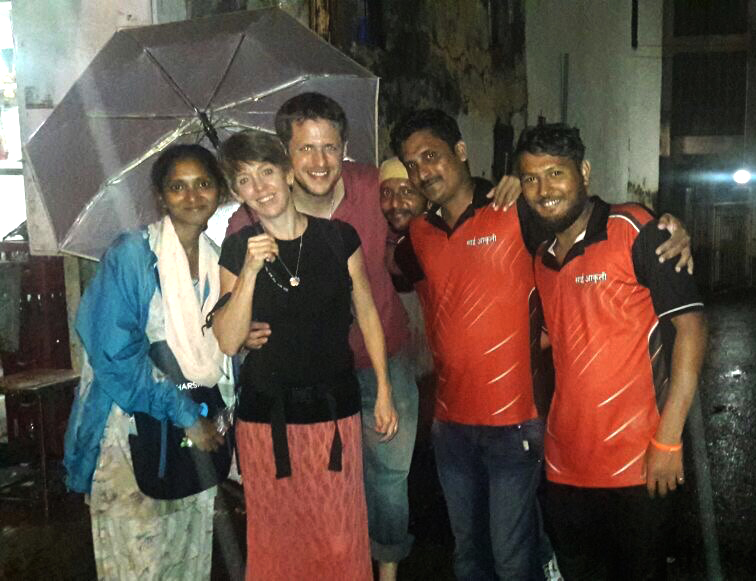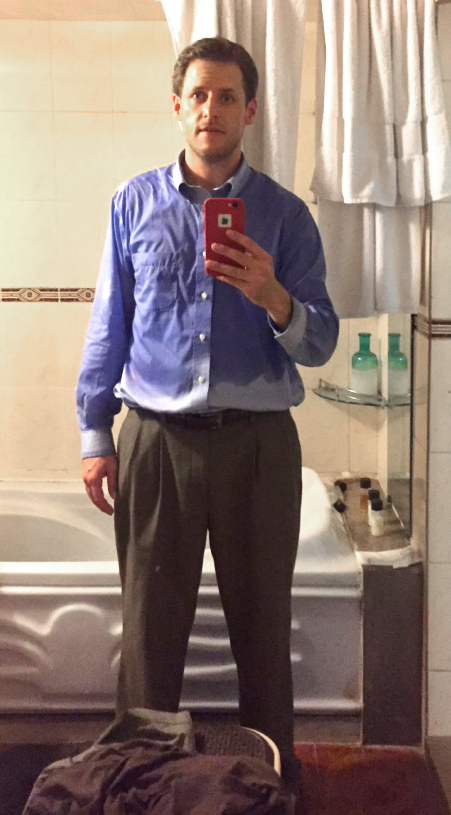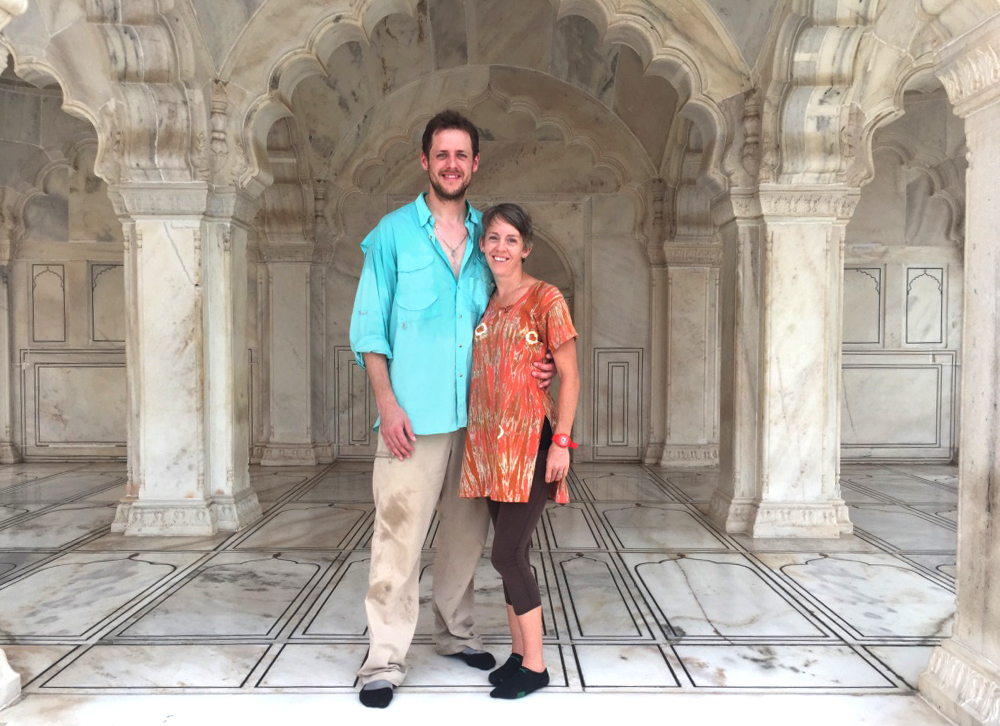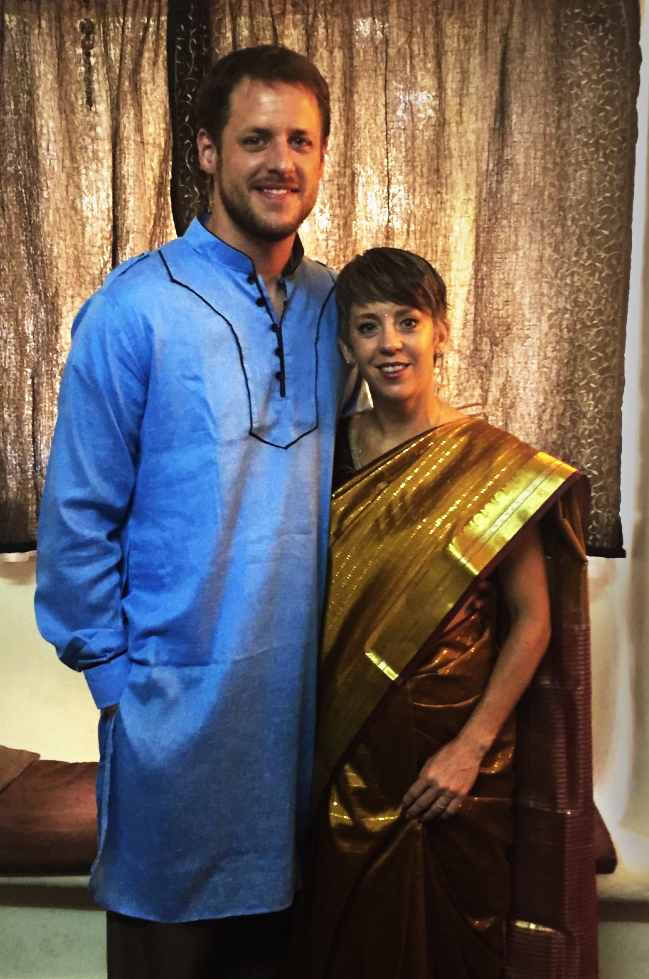
Matthew Goodwin MD, PhD — India
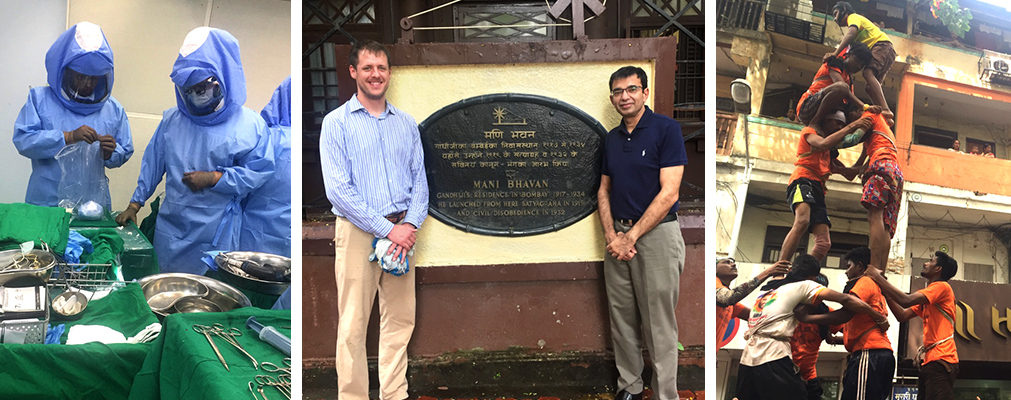
From left 1) In "the OT" removing a tumor 2) Outside Ghandi's old house with Dr. Manish Agarwal 3) The Dahi Handi human pyramids
Matt Goodwin, MD PhD is a resident at the University of Utah Department of Orthopaedics. During his residency Dr. Goodwin had the opportunity to spend a month-long rotation in Mumbai, India. He lived near one of the most densely populated areas in the world: the Dharavi Slums.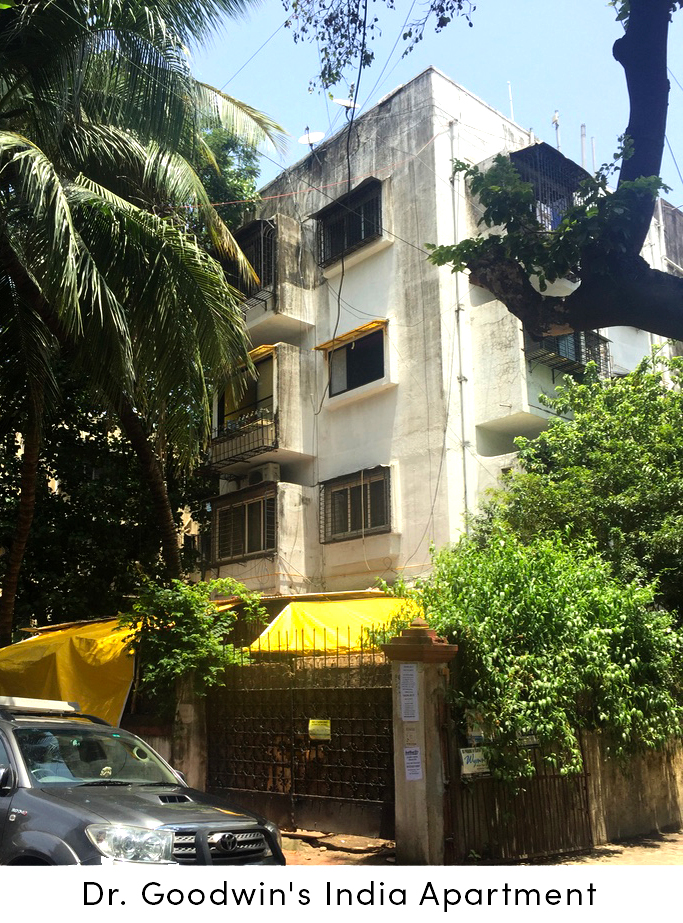
This area of India is known for its high population density and the large number of factories creating export goods. While Dr. Goodwin’s experiences in Mumbai were influenced by these factors, his rotation was predominantly influenced by the vibrant culture he experienced and the people he had the opportunity to meet.
Clinic & Operating Practice

Dr. Goodwin primarily worked with Dr. Manish Agarwal and his fellows at Hinduja Hospital in Mumbai. While there, Dr. Goodwin had the opportunity to join any case he found interesting, usually with the fellows and attending. He primarily was involved in spino-pelvic oncology cases, his primary orthopaedic interest.

From left 1) Patient who underwent a "rotationplasty" surgery after removing cancer 2) Patient with alveolar soft parts sarcoma (ASPS), a rare tumor Dr. Goodwin published novel findings on in Cancer Cell while a resident 3) Patient with a large tumor above the knee 4) X-Ray of another rotationplasty patient
Operating Theater Shoe Procedure
The culture of operating theater (OT) shoes in India is different than most hospitals in the US. In India, everyone has designated shoes to wear specifically in the OT. In addition to these designated shoes there are specific rules in place to keep outside contamination from being tracked into the OT. First, you remove your outside shoes in one room and then walk to the next room barefoot. In the next room, you have your designated OT shoes. You always put them on before entering the OT and leave behind when you are done. You never take them anywhere else.

Meeting with Patients

Dr. Agarwal using different methods to explain pathology to patient's and their families in his office. From left 1) Intra-operative photos 2) Traditional MRI/XR 3) Skeleton models
In the clinic, it was common for fellows to meet with patients first and then bring them to Dr. Manish’s office to meet with him. It is typical for patients to bring multiple family members to their appointments. Dr. Manish meets with the patient and family to go over the case. Regularly he would stay late and take time to explain the same information to multiple family members as needed.
Dr. Goodwin spent a good amount of time with Dr. Manish Agarwal while he met with patients. One thing that stuck out to Dr. Goodwin was Dr. Manish's remarkable bedside manner. Dr. Manish often used models, pictures from the OT, and traditional imaging to explain the pathology to patients.
People & Cultural Experiences
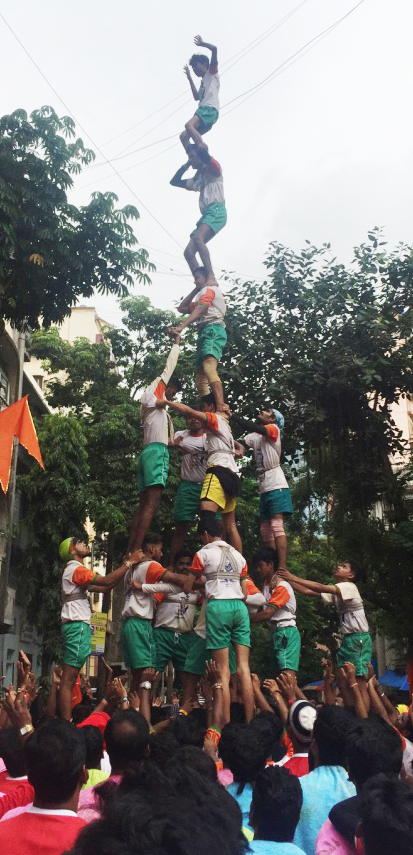 Dr. Goodwin made the most of his rotation while in the hospital and community. “The first week I was there I made friends at a local Dahi Handi “warm up.” They invited me to join their team, building human pyramids for a day, and I did, ” says Dr. Goodwin. He remains friends with the couple that invited him, and dined with them often while there.
Dr. Goodwin made the most of his rotation while in the hospital and community. “The first week I was there I made friends at a local Dahi Handi “warm up.” They invited me to join their team, building human pyramids for a day, and I did, ” says Dr. Goodwin. He remains friends with the couple that invited him, and dined with them often while there.
He doesn’t necessarily recommend participating in the Dahi Handi pyramids, mostly because it is very dangerous. Many people are injured and even die during this event. This cultural experience was among the first of many Dr. Goodwin would experience.
Dining & Being a Guest

Dinner at Dr. Manish's Home: Dr. Manish in a white shirt with wife to the left. The two Orthopaedic Oncology fellows and Dr. Godowin and his wife are also pictured.
Dr. Goodwin met and dined with many people while in Mumbai. Everyone from Dr. Manish and fellows to friends and neighbors. He was amazed at the hospitality shown to him throughout his stay.
In Mumbai it is traditional to treat house guests with the utmost respect. There is a saying that guests are “like God” while in a host’s home. Hosts will bring out food and will want you to eat first.
Dr. Goodwin recalls how his neighbors would always include him in dinner and evening plans. One night the two surgeons that were Dr. Manish's fellows took him to a beach for the night. One fellow insisted on carrying Dr. Goodwin's bag simply because he was their guest. In his view, the people of Mumbai were among the most welcoming he has ever encountered.

Dr. Goodwin and his wife surrounded by kids in the neighborhood after an impromptu dance session.
Traveling

Dr. Goodwin and his wife Mandy in front of the Taj Mahal.
Dr. Goodwin and his wife had the opportunity to travel to see the Taj Mahal, Agra Fort, and Delhi fort while in India. His hosts insisted that he take a few days away from the hospital to travel. Mumbai is known to be an incredibly friendly area with little to no crime.
Although, Dr. Goodwin suggests reading about the locations you plan travel to. Not all areas in India are safe and it’s important to know beforehand and act accordingly.
Climate & Weather
1) Dr. Goodwin and his wife with neighbor Akshada and friends listening to music and dancing in the rain. 2) Dr. Goodwin after riding the train back from the hospital. Soaked in sweat, not rain... 3) Monsoon Flood
India is hot, humid, and can be quite rainy. During Dr. Goodwin's rotation, there was a monsoon that flooded Mumbai. The monsoon flooded the streets to waist height. It stranded many people and also caused deaths, taking the life of a local physician.
Dr. Goodwin's Final Thoughts
“Overall, this experience was life changing. I have never had an experience like this professionally or personally. It is hard to explain. You will feel like you are part of the Manish Agarwal team and the local community. Even when I went over to a local friends house “just for soup” one night, the other neighbors grabbed me and started dancing and taking pictures. Incredibly great in all ways."
